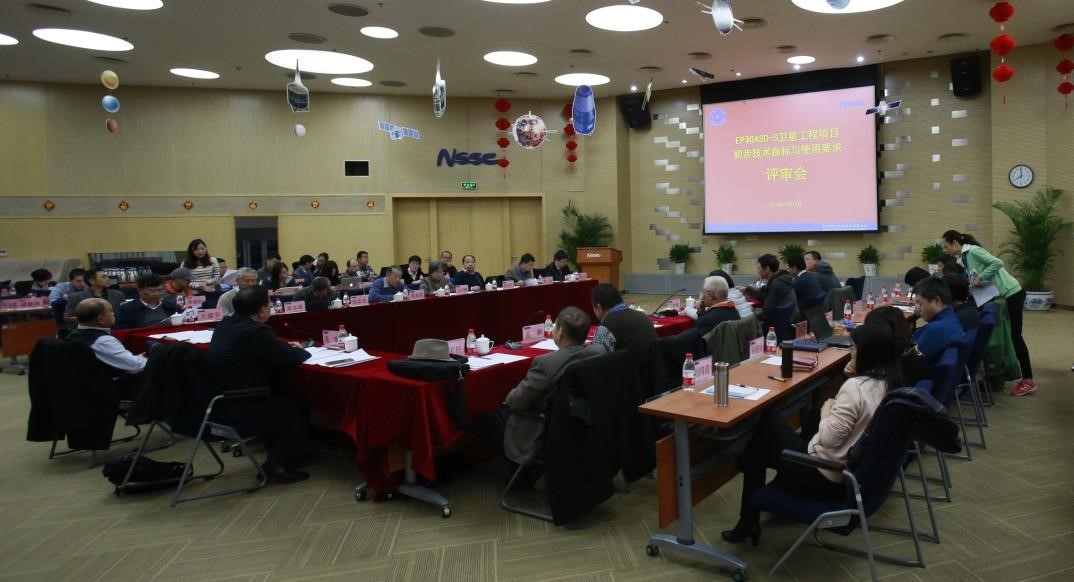EP and ASO-S preliminary technical indicators and application requirements have passed the review
On November 19, the National Space Science Center of the Chinese Academy of Sciences organized a special space science strategic pilot technology project (referred to as the space science pilot project) Einstein Probe (EP) and Advanced Space-based Solar Observatory (ASO-S) satellites in Beijing The preliminary technical indicators and application requirements review meeting of the engineering project. From Jiuquan Satellite Launch Center, Aerospace Science and Technology Corporation, Aerospace Dongfanghong Satellite Co., Ltd., Shanghai Branch of Chinese Academy of Sciences, National Astronomical Observatory, Institute of High Energy Physics, Yunnan Observatory, Institute of Microsatellite Innovation, Institute of Electronics, Xi'an Optics and Precision Machinery Research More than ten experts from the Institute, Changchun Institute of Optics, Fine Mechanics and Physics, Military Project Supervision Department, National Space Science Center and other units formed a review team, and researcher Cui Jijun served as the leader of the review team. The meeting was presided over by Wu Ji, the person in charge of the space science pilot project and director of the National Space Science Center.
Senior Engineer Zhang Chen of National Astronomical Observatory and Associate Researcher Huang Yu of Purple Mountain Observatory successively represented the EP project team and the ASO-S project team to make the preliminary technical indicators and application requirements of the Einstein probe satellite project and the advanced space-based solar observatory satellite project. report. The report introduces the project’s scientific objectives, payload configuration and technical indicators, and puts forward the requirements of payloads for satellite platforms from the aspects of satellite attitude and orbit control, structure and mechanism, telemetry and remote control, data management and transmission, etc. The perspective of scientific objectives puts forward the preliminary technical requirements for the carrier system, launch site system, measurement and control system, ground support system, and scientific application system.
After questioning and appraisal, the expert review team believes that the satellite payload configuration of the two satellite engineering projects of Einstein Probe and Advanced Space-based Solar Observatory is reasonable and feasible, the main technical indicators are reasonable, and the technical requirements for the satellite platform are clear, and they can meet the requirements of the mission. Achievement of established scientific goals. The review team agreed that the preliminary technical indicators and use requirements of the Einstein probe and the advanced space-based solar observatory satellite engineering project passed the review.
The Einstein probe is a small scientific exploration satellite oriented to the field of time-domain astronomy, which will discover and study mutant celestial bodies and events that are currently undetectable.
The advanced space-based solar observatory aims at "one magnetism and two storms", and will make breakthroughs in the frontier fields and research of international science, such as the solar magnetic field, solar flares and coronal mass ejection, such as the physical causes, interactions and interrelationships. Both projects have completed the background model stage research in the first half of 2016. This review has provided an important working foundation and input for the comprehensive demonstration of the two satellite engineering projects of the Einstein Probe and the Advanced Space-Based Solar Observatory.
(Contributed by Comprehensive Planning Office)

Figure 1 EP and ASO-S preliminary technical indicators and application requirements review meeting site

Figure 2 Researcher Wu Ji, the person in charge of the pilot project, introduced the background of the project

Figure 3 Researcher Cui Jijun, the leader of the review team, presided over the review
Download attachments:


